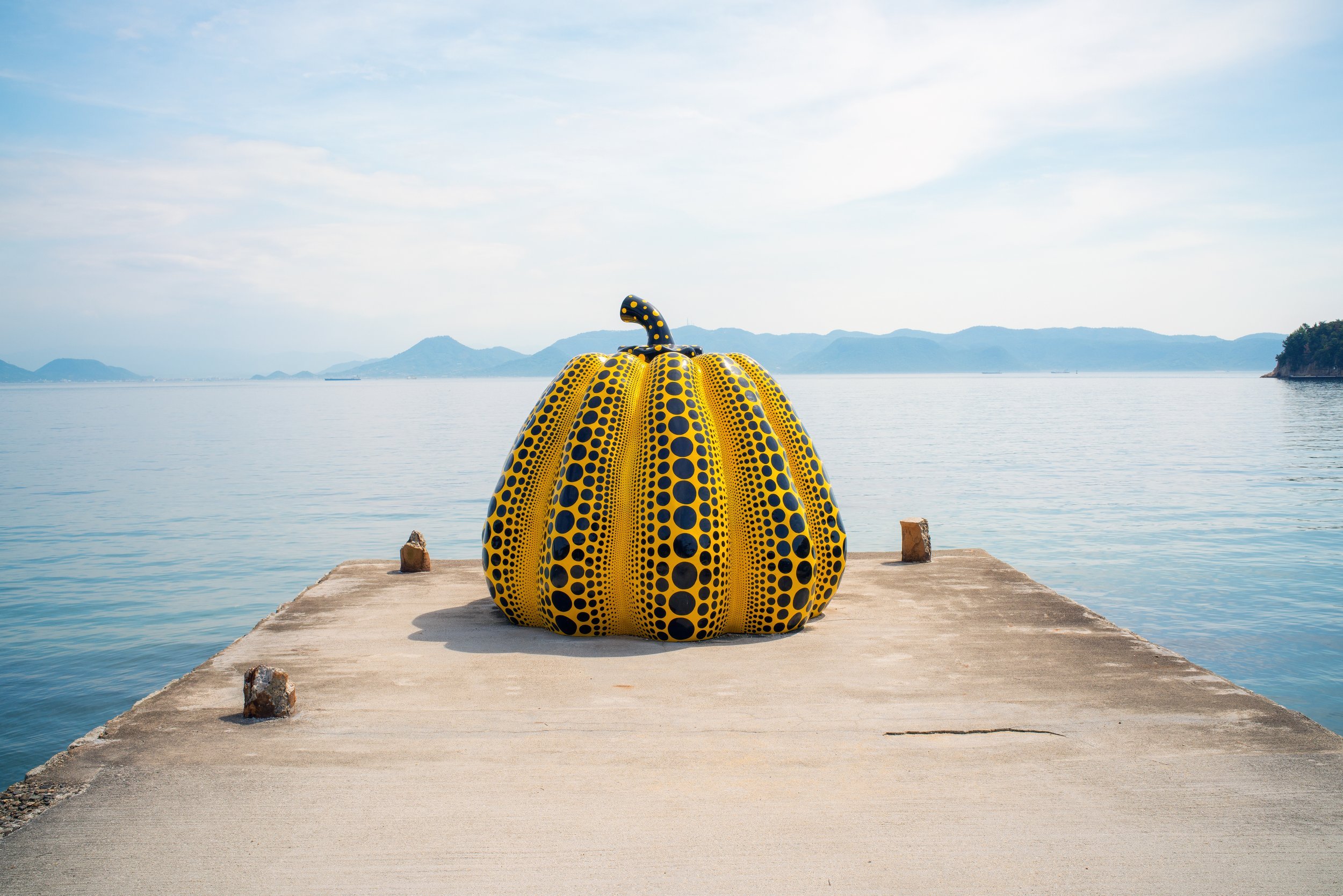The Best Smaller and Underrated Museums in Japan
by Laura Studarus
Unexpected sources of delight
Japan has its fair share of notable museums, from the changing exhibits at the National Art Center Tokyo to Nihon Minkaen, there’s no lack of places to learn about the beauty of Japanese culture and creativity.
But sometimes, it’s fun to veer off the beaten path, so we’ve collected a few of our favorite smaller and underrated museums. From singular artist visions to cultural explorations, less noted exhibitions, and big names you might recognize (hiya Totoro!), here are a few of our favorite smaller museums to bookmark for your next trip.
YAYOI KUSAMA Museum, Tokyo
Perhaps you’re already familiar with Kusama’s infinity rooms, the dreamlike mirrored spaces that populate social media. However, the avant-garde icon is a multidisciplinary artist who also works in sculpture and painting. The YAYOI KUSAMA Museum captures a fascinating cross-section of the artist’s work, selected by Kusama herself and housed in a cozy building in Tokyo’s Shinjuku neighborhood. A few notable works are present (Yes, there are pumpkins, and yes, they are glorious). However, the museum is also a hotspot for new paintings as the prolific 94-year-old continues to chase her wild and innovative ideas.
Taro Okamoto Memorial Museum, Tokyo
If you’re interested in singular creative visions, it’s worth paying a visit to the Taro Okamoto Memorial Museum. The museum explores the Japanese artist’s trip through French surrealism from the very studio where he made some of his most notable paintings and sculptures. A lovely in-house café, A Piece of Cake, which—as the name might imply—is the perfect place to fulfill your post-art sweet cravings.
Ghibli Museum, Tokyo
It might be a stretch to call anything Ghibli-related underrated. For many, the famed animation house was their first taste of Japanese culture abroad. (And we certainly enjoy travel built around Ghibli themes.) But with all the hype surrounding the Ghibli in Nagakute, Aichi, it’s worth reminding that the Ghibli Museum in Tokyo is still worth a visit. Located in Inokashira Park, the building’s whimsical exterior, featuring Totoro working the ticketing booth, is incredibly photogenic. However, stepping inside (to a place where no cameras are allowed) reveals a wealth of insight into the mind of director and Ghibli visionary, Hayao Miyazaki. Enjoy rare shorts at the in-house theater, browse the in-house exhibits, and take the spiral staircases to the impressive European-style rooftop garden for the ultimate other-worldly learning experience.
Ochanomizu Origami Kaika, Tokyo
Origami, or the art of paper folding, has been a part of Japanese culture since the seventh century when paper was first introduced to the country via China. Ochanomizu Origami Kaika demonstrates the beauty and delicate nature of the craft. The gallery is on the second floor, with the ground floor operating as a gift shop. Ready to get some hands-on experience? The third floor is a workshop area where guests are invited to experience folding their own creations.
Cup Noodles Museum, Yokohama
Yes, Cup Noodles Museum in Yokohama has fun elements that any kid will enjoy. (Their “make your own cup noodles” experience will bring out the childlike wonder in anyone of any age.) But under the fun aesthetics of rows and rows of colorful packages, there’s a deeper message of a businessman in search of innovation, who not only recreated his own product but also raised industry standards and the art of fair competition in the process.
Ukiyoe Small Museum, Kyoto
Ukiyoe Small Museum went viral for its amazing sign announcing “Open when I wake up and close when I must go to sleep. When I’ve had enough the store is closed.” Those lucky enough to step through the door will be treated to a tour of Ichimura Mamoru’s traditional woodblock prints, featuring animals, people, and landscapes. The style is called ukiyo-e, and there are only about 50 artists left in Japan—which means a visit with Mamoru is one of the more unique and special things you can do during your visit to Kyoto. No website, but if you’re keen to attempt a visit, he can be found here: Japan, 〒605-0811 Kyoto, Higashiyama Ward, Komatsucho, 151 市村一房堂
teamLab Botanical Garden, Osaka
While, obviously, teamLab is far from underrated, we do have to give a special shout-out to tea teamLab Botanical Garden Osaka, which often gets overlooked in favor of its flashier, more publicized Tokyo siblings. Located in Nagai Park, this open-air setup gives guests the opportunity to experience some of teamLab’s signature installations in a whole different setting. Wander through a forest populated with singing and color-changing eggs (Be sure to nudge them gently for the full experience—touching is encouraged!). Squeeze through a sea of huge, color-changing balls. Enjoy the mesmerizing swirling lines of “Sculptures of Dissipative Birds in the Wind.” And with only two-timed entries each day, you’ll never have to fight the crowds to enjoy the magic.
Benesse Art Site, Naoshima Island
From the Kusama pumpkins to its streets densely populated with galleries, the entirety of Naoshima Island is a museum that’s often overlooked by visitors (you can’t even escape it at the onsen—for a special dip, be sure to check out I Love Yu, a bathhouse with interior art by Shinro Ohtake). But perhaps the ultimate experience for the art-curious is booking a stay at the Benesse Art Site. Their unique buildings allow you to curate the exact experience you’re looking for, whether that’s the opportunity to commune with nature through stunning architecture, fall asleep to the sound of waves, or checking off a childhood dream by staying the night in the museum building itself.
Upopoy, Shiraoi
The Ainu are Japan’s indigenous people who live in the northern regions of the country, mainly on the island of Hokkaido. While their story doesn’t get much attention (it wasn’t until 2019 that they were officially recognized by the government), Ainu culture is an important element of Japanese heritage. An easy day trip from Sapporo, the Upopoy Museum celebrates the lives and culture of Japan’s earliest inhabitants. Wander the exhibits, designed to be taken in an order of your choosing, to learn more about Ainu tools, dress, weapons, and culture. Finish your visit with a meal at Haru Ran Na, an upscale onsite eatery inspired by traditional Ainu ingredients.
Tea Museum, Shizuoka
What says Japan quite like a cup of tea? The beverage has been part of the national fabric since the Nara period (710–794). If your idea of joy is a cup of the good stuff, you’ll be delighted by Shizuoka’s Tea Museum. Not only does the museum dive into the history of tea, but provides plenty of opportunities for hands-on experiences, including tea ceremonies, matcha grinding, and the opportunity to take a meditative moment in a tea house dedicated to Enshu Kobori, an Edo-era feudal lord and tea master.





